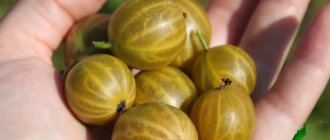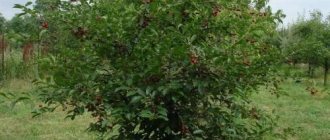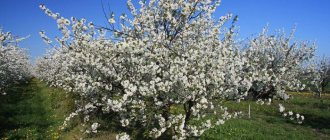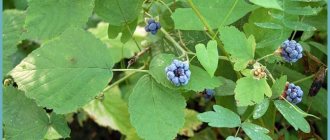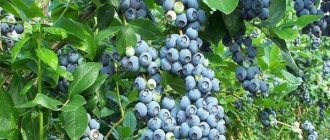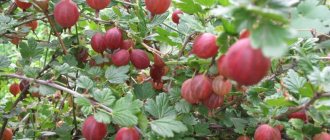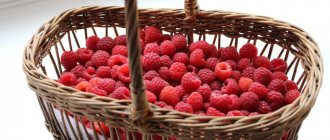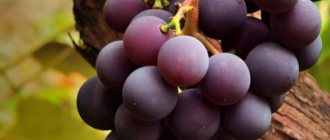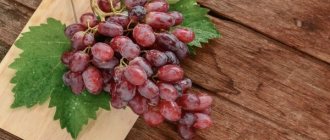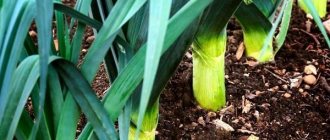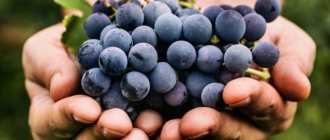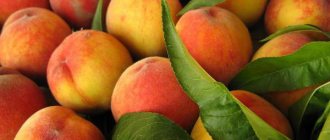The sweetest varieties
Sea buckthorn is traditionally sour. But today, thanks to painstaking breeding work, there are several varieties that are distinguished by increased sweetness. These varieties are called dessert varieties - their fruits smell pleasant and contain a lot of sugar.
Darling
Medium-sized shrubs with a spreading crown. There are very few spines, they are dispersed along the entire length of the branches. There is a whitish coating on the shoots. The leaves are silvery on the underside. One bush produces 7.3 kg of berries.
Bright orange, large berries ripen closer to September. The fruits have a classic, oval shape and are distinguished by their friability; winter preparations are prepared from them and sea buckthorn oil is pressed. The weight of one berry is 0.65 g. It easily tolerates harsh winters and is not afraid of diseases traditional for sea buckthorn.
Roots
The plant is of medium height, the crown is compressed. The thorns are short, concentrated at the top of the branches. Up to 14 kg of fruits are collected from one plant. Loves the sun and needs to be fertilized with organic fertilizers. Tolerates moisture deficiency. Preventative pruning is required annually.
The variety is early ripening and winter-hardy. It easily grows and ripens in Siberia. The berries are large, weighing about 0.6 g. Sweet and sour, orange berries have a rich taste and fresh aroma.
Tenga
The plant is average in all respects - in height, crown density and the presence of thorns. One plant produces up to 14 kg of fruit.
Early-growing, mid-ripening variety. The berries are large, weighing about 0.8 g. Orange berries have a bright, rich taste and fresh aroma. Ripe fruits have a “blush” appearance. Resistance to sea buckthorn flies and mites.
Muscovite
Plant height – 2.2-2.5 m. Compact pyramidal crown. Productivity – up to 10 kg. The purpose is universal. Dessert fruits, aromatic. There are thorns.
The berries are bright orange, thin-skinned, with reddish spots on the surface. It is a mid-season variety; the berries are harvested in early September. The fruits are dense, shelf-stable, and can be transported without problems. Disease-resistant and frost-resistant variety.
Everyone knows about the benefits of sea buckthorn, but this miracle berry also has contraindications - it should not be consumed by people with urolithiasis, gastritis and gallstones.
Nizhny Novgorod sweet
The plant grows quickly, of medium height, spreading crown. The leaves are dark green, large. Prefers the sunny side. The bush bears fruit for 2-3 years. 10 kg of berries are collected from the bush.
The variety is mid-season - the berries are ready for harvesting at the end of August. The fruits have the shape of cylinders, they are orange-yellow, sourish, large - 0.9 g. They come off easily. This sweet sea buckthorn is suitable for any purpose; it is used not only for medicinal purposes, but also for preparing various delicacies - jams, compotes, jellies, jelly, sweets, wines.
Moscow pineapple
Bushes of medium height, with a compact crown. One plant brings owners up to 16 kg of sea buckthorn. Minimum thorns. The berries have a specific aroma reminiscent of pineapple.
Belongs to the mid-season category, the berries ripen by mid-August. They are pear-shaped, medium in size, weigh no more than 0.6 g. The color is dark orange, with a red spot at the top. It tolerates frosts without damage. Resistance to standard diseases. The fruits are universally used; transportation does not cause spoilage.
Claudia
Self-sterile variety - not capable of self-pollination. The tree-like bushes are of medium height, the crown is flat-rounded, spreading, density is medium. One bush produces up to 10 kg of sea buckthorn. The thorniness is weak. Fruiting begins in the 4th year of planting.
The berries are cylindrical, bright orange, large - 0.8 g. The berries come off easily. The taste is dessert. Suitable for any processing. The variety is not afraid of cold weather, viruses, and is not damaged during transportation. Used for freezing. It resists sea buckthorn fly well.
Thornless varieties
Thorns are the main problem when harvesting sea buckthorn. But thanks to targeted breeding work, today there are many varieties without thorns or with a small number of them.
Solar
Tall tree-like shrub with a spreading crown. Height – 2.5-2.8 m. There are no thorns, which makes harvesting very easy. Berry picking – 9-10 kg from one bush. It begins to bear fruit in the third year after planting.
Mid-season variety. The berries are amber in color, medium in size, weigh 0.7 g. With a pleasant sweet and sour taste. Excellent winter hardiness, resists pests and diseases.
Socratic
Completely thornless plant. Vigorous tree-like shrub - up to 3.5 m. Spreading crown. Harvesting berries from one plant – 9-10 kg.
The fruits ripen at the end of August. The weight of the berries is 0.6-0.8 g. The red-orange fruits have an excellent taste. The variety is universal, does not suffer from fusarium, and is resistant to the gall mite.
Zhivko
The bushes are of medium height, the crown is broadly oval. The shoots are thornless. One plant produces 14-20 kg of fruit.
Late-ripening variety with oval fruits of orange-red color. Berries with dry separation. Weight of berries – 0.5-0.6 g. Taste is mediocre. For technical purposes.
Giant
A low tree, suitable for planting in private gardens and for industrial cultivation. Harvesting from one plant is 8-10 kg. The branches are completely devoid of thorns. The fruits appear 3-4 years after planting the seedlings. The plant reaches its maximum yield at 6-7 years of age.
The berries ripen by mid-September. The fruits are cylindrical, orange in color, weight - 0.8-0.9 g. There are also larger berries - 1.3 g each. The tearing is dry and easy. Suitable for any purpose. In areas with short summers, berries, due to late ripening, do not have time to accumulate sugar and ripen properly.
Sea buckthorn becomes sweet only after frost; if you pick the berries earlier, they will be bitter and sour.
Girlfriend
A medium-sized tree-like plant with a slightly spreading crown. Berry picking – 8 kg. There are no thorns. Frost-resistant sea buckthorn grows and bears fruit in the harshest climates. Withstands forty-degree frosts.
Weight of berries – 0.8-1 g. The fruits are large, oval-round, color – orange. The pulp has a refreshing taste. The variety is mid-season. Resistant to endomycosis. Slightly affected by sea buckthorn fly.
Altai
Tree-like shrub, compact, dense crown, which can be easily given to any desired shape. One plant produces up to 15 kg of fruit. Spikes are completely absent.
Ripens at the end of August. The berries are orange in color and smell like pineapple. Weight – 0.8 g. Easy to tear off. The tree is strong, hardy, and does not get sick. They have a great sweet taste. Withstands frosts down to minus 45°C.
Chechek
A wonderful variety - sweet, large-fruited and almost without thorns. Fruitful - the harvest of berries reaches 16 kg. Maximum – 25 kg. The bushes are medium-sized, with a spreading but sparse crown. The plant begins to bear fruit only at 5 years of age.
Bright orange berries, with a reddish “blush”, tightly cling to the branches. Weight – 0.9 g. The fruits are sweet and sour, with a dense skin and a dry tear. This Siberian variety can withstand the harshest winters well.
Excellent
An old, time-tested variety, bred in the 70s of the last century. The plant is medium-sized, the crown is spreading, rounded. There are no thorns. Harvesting from one bush is about 9 kg. Fruits abundantly for 10-12 years.
Belongs to the mid-season category. The berries ripen by early September. Oval, orange berries cling tightly to the branches. The weight of one berry is 0.7 g. They come off easily. Sweet and sour fruits are suitable for any purpose. High immunity and winter hardiness. Minus - the foliage is affected by mites and sea buckthorn flies.
Growing crops in the Moscow region
Sea buckthorn has long taken root in the gardens of the Moscow region. In order for it to develop well and bear fruit, the most acceptable growing conditions are created for it, taking into account the climatic conditions of the Moscow region. Sea buckthorn is photophilous. It grows poorly and bears fruit in shade. It needs fertile, light, well-moistened soils, with a groundwater level no closer than 1 meter from the surface. Acidic soils are limed with slaked lime (400-600 g/sq. m) in October.
Tip #1. It is advisable to plant the plant in early spring. For this, 2-3-year-old seedlings with a developed root system are useful. The width and depth of the planting hole is at least 50 cm.
Sea buckthorn is a dioecious crop. Which means that on certain bushes only male (staminate) flowers develop, which pollinate, while on others, female (pistillate) flowers develop, which, having fulfilled their service - pollination and fertilization - produce fruit. When entering the fruiting phase, male and female flowers are easy to distinguish before the growing season begins: male buds are several times larger than female ones, and they also have 5-7 covering scales; In females, the buds are smaller, they are elongated and covered with only 2 scales. For pollination to proceed normally, one male shrub is enough for 4-6 female shrubs.
When selecting a variety, first of all, you need to give preference to varieties suitable for each area. In the middle zone of the country, these are proven varieties: Chuyskaya, Trofimovskaya, nugget, Botanicheskaya, Orange, Velikan, Obilnaya, etc. They are high-yielding, large-fruited, with a high oil content in the berries, and dry separation.
When caring for fruit-bearing trees, you need to apply organic fertilizers (compost, humus) once every 3-4 years: 1 bucket per 1 square meter. m of tree trunk circle. Fertilizers are embedded in the ground to a depth of 10-20 cm.
Large-fruited varieties
Each sea buckthorn has thousands of small berries. Many gardeners like large-fruited plants. The latter include varieties whose weight exceeds 0.8 g.
Elizabeth
Compact thornless plants. Picking berries from 1 plant – from 5 to 14 kg. Breeders, when developing this variety, sought to get rid of the main disadvantages of sea buckthorn, and they completely succeeded; “Elizabeth” has large fruits and almost no thorns.
Late ripening variety. Cylindrical orange fruits weigh 0.8-0.9 g. The aroma is pleasant. The variety is hardy in all respects - it is not afraid of frost, and has strong immunity.
Naran
The plants are low, the crown is medium spreading. Harvest – 12-13 kg per bush. There are spines only in the upper parts of the shoots; the spines are thin and short.
The fruits are pale orange, thin-skinned, elongated-cylindrical in shape. They weigh on average 0.9 g. Not afraid of frost, pests and diseases. Excellent taste – the variety was awarded the highest tasting score.
Lakera
This is a buckthorn plant - it has many trunks. The latter, woody ones, make the bush look like a tree. The shape of the bush is spherical, elliptical. Height – 2-3 m. Annually it grows by 0.5 m. It grows actively after pruning. There are thorns on the shoots. One bush grows 10-15 kg of berries.
The berries are light orange in color, shiny, oblong in shape. Very large – 1.1-1.2 g. Late variety, fruit ripening in early autumn. Undemanding to soil, winter-hardy.
Essel
Elite large-fruited variety. Productivity – 7-8 kg per bush. Fruiting begins in the fourth year after planting the seedling. There are no thorns.
The variety is early ripening. The fruits weigh 1-1.2 g, are very large, sweet, dark orange in color. The shape of the fruit is ovoid. The length of the berry is 1.5 cm. The plant is very decorative. Great dessert taste. Tearing the berries from the stalk is semi-dry. The berries are delicious fresh or pureed. Attitude to drought is average, winter hardiness is high.
Openwork
Low-growing shrubs are distinguished by their decorative appearance, and their berries are distinguished by their size. This is a large-fruited variety that produces about 6 kg of fruit per bush. Fruiting occurs after 4-1 years of planting. Productivity – 5-6 kg per bush.
An early-ripening universal variety with large, up to 1 g, berries. The berries are rich orange in color and cylindrical in shape. Winter-hardy variety. Magnificent purees, jellies, jams are made from sour berries, wines are made and much more. It is not afraid of moisture deficiency and tolerates heat well.
Zlata
The bushes are of medium height, the crown is slightly spreading. There are thorns. Gives stable yields - an average of 15 kg per bush. It begins to bear fruit 3-4 years after planting the seedling.
A late-ripening variety, its berries ripen at the end of August. Large berries - about 1 g, reaching 1.3 g. The taste is sweet and sour. The color of the fruit is straw-egg. Sun-loving variety, resistant to disease.
Augustine
An adult plant has a medium spreading crown. Thorns are very rare - picking berries is simple and enjoyable. Productivity – 16-18 kg of berries per plant.
In terms of ripening time, “Augustina” is an early ripening variety. The fruits are ready by the end of July. In the northern regions, ripening shifts to August. The fruits are bright orange, ovoid. Weight – 1.1 g, maximum – 1.4 g. Sour taste. Ripe bunches are easy to pick - the picking is dry. The variety is not afraid of fungal infections and pests. Tolerates drought and frost.
Diseases and pests
During the growing season, the sea buckthorn bush can be affected by diseases and pests. The most dangerous cultural diseases are:
- The fungal disease endomycosis manifests itself on the fruits of the crop. Under its influence, the berries become soft and flabby. Their flesh is filled with gray mucus, which ruptures the shell, flows out and affects neighboring fruits. The disease in question develops intensively in humid weather. Treating the culture with Bordeaux mixture in two stages will help defeat endomycosis. The bush is sprayed for the first time during flowering, and again in mid-summer.
- A disease such as black cancer can be identified by the appearance of dark spots on large branches of sea buckthorn. The bark in the affected areas not only turns black, but also becomes covered with numerous cracks. The causative agent of black cancer penetrates the plant after pruning into untreated wounds, as well as as a result of frostbite of the shoots. The fight against the disease consists of cleaning the damaged area to a healthy bark and treating the wound with copper-containing preparations, for example, copper sulfate.
- The fungal disease scab damages the leaves, shoots and fruits of sea buckthorn. The disease begins to progress in mid-summer; it can be identified by the formation of rounded black spots on the fruits of the crop and the formation of black swellings on the leaves and shoots. The damaged bush seems to be splattered with mascara. Prevention of the disease is considered to be annual cleaning and burning of fallen leaves. To treat scab, it is necessary to treat the plant with a Bordeaux mixture of 1% concentration, but such actions are carried out no later than three weeks before the expected harvest date.
Bushes often suffer from pests:
- In early spring, the blossoming buds of the plant can infect sea buckthorn moth caterpillars. You can get rid of this parasite after spraying the crop with a solution of karbofos.
- Another pest, the sea buckthorn fly, if not detected in time, can destroy the entire crop. Insects begin to fly and lay eggs in the fruits at the end of June. During further development, the larvae of parasites eat the pulp of the berries, which leads to their darkening and falling off. You can kill the fly using a chlorophos solution. The crop is treated against the pest in mid-July.
- Aphids cause particular harm to sea buckthorn. These insects settle in colonies on the undersides of leaves and feed on plant juices. The vital activity of aphids leads to curling and premature falling of leaves. Treating the bush with an infusion of tobacco leaves or onion peels will help destroy the parasite. This solution is diluted with soap and sprayed on the leaves of the plant.
Anyone, even an inexperienced gardener, can grow sea buckthorn on their own plot. Put the tips in this article into practice, and you will be able to get a rich harvest of healthy berries.
High-yielding varieties
Sea buckthorn combines decorativeness and economic benefits. If a plant is planted for the purpose of producing fruit, the yield of the variety is important. There are bushes that produce only 5-6 kg, and there are varieties with a yield of 20-25 kg per bush. If sea buckthorn is grown for the purpose of producing berries, for home harvesting or on an industrial scale, it is advantageous to use the most productive varieties.
Abundant
Shrubs of medium and high growth, the crown is rounded, relatively spreading. The harvest is 14-16 kg, if intensive technologies are used - 20-24 kg. It’s easy to pick the berries – they don’t get crushed. It bears fruit by the 3-4th year of planting.
The variety is late-ripening, universal. The fruits are standard - cylindrical, dark orange in color. Fruit weight - 0.86 g. Not particularly sour. Loves sunny areas. Resistance to diseases and extreme weather.
Botanical fragrant
Shrubs of medium size, umbrella-shaped crown. The average yield is 9-15 kg, maximum – 25 kg. Soft thorns are rare, short and concentrated only on the top of the branches.
High-yielding early variety. Ripens in August. The fruits are large - 0.6-0.7 g. The round-oblong berries are shiny, the color is orange-red, there is a reddish spot at the top. Universal berries. Do not choke during transportation. Immunity to endomycosis.
Chuyskaya
The shrub is low with a sparse spreading crown. The average yield is 11-12 kg per bush, and with the use of intensive technologies – up to 24 kg. Very few thorns - this is important for comfortable berry picking.
Ripening time is mid-August. Late variety. Bright orange fruits weigh 0.9-1 g. The variety is self-sterile and requires pollination.
Botanical
The bushes are very tall, reaching 3.5-4 m. The crown is pyramidal. Harvesting berries from one plant – 8-15 kg, maximum – 20 kg.
Mid-early maturation. The fruits are yellow-orange, quite large, weigh up to 0.9 g. Thick-skinned, with a dry detachment. The purpose of the fruit is technical. The downside is that it ripens quickly, which makes the berries difficult to transport. Hardy variety with high immunity.
Panteleevskaya
A plant with moderate growth, the crown is spherical. Minimum thorns. Picking berries from a bush - 10-20 kg. The fruits are not crushed during harvesting.
Late ripening - berries are picked in the last ten days of September. Safety during transportation is average. The fruits are red-orange. Weigh up to 0.7 g, elongated oval in shape. The peduncle is long – 5-8 mm. The variety is winter-hardy and has good immunity to diseases.
Gift to the garden
Compact shrubs with few thorns. The crown is umbrella-shaped. Very high yield - at the level of 20-25 kg per bush.
The berry picking begins at the end of August - the variety is classified as mid-season. The plant is not only productive, but also large-fruited - the berries weigh 0.8 g or more. Their color is rich orange, and their taste is unimportant - astringent and sour. Excellent immunity and resistance to cold.
Gift from Moscow State University
The height of the bushes with spreading crowns reaches 3 m. One plant produces up to 20 kg of sweet and sour fruits. The stalks are 5 mm, the fruit comes off easily, dry.
The variety is early ripening. The berries, when ripe, acquire a beautiful, bright orange color - the tree is more of a decorative tree. The weight of one berry is 0.7 g. The fruits are universal, have a high content of vitamin C, and do not wrinkle during transportation. The plant is hardy and rarely gets sick.
General information
To get a good harvest of sea buckthorn, you should carefully study the weather conditions of your region; an important indicator will be the soil, its moisture content and composition. Based on these indicators, they begin to select a variety. You should not choose only abundantly fruiting varieties; with proper care and the right variety in your garden, sea buckthorn will always bear fruit well.
Growing sea buckthorn is not a troublesome task
Preventive measures will also be important, even if the characteristics of the trunk say that it is immune to diseases and pests. A simple spraying at the beginning of the season will completely protect the plant from the unpleasant effects of the environment on the green part of the crown and preserve the fruits in full.
Regular application of fertilizers in the spring and light mulching of the soil around the bush will increase productivity and give the plant more vitality for growth and development.
Growing sea buckthorn on a personal plot or in a garden is not a troublesome task, but to obtain good harvests, some attention will have to be paid to the shrub.
Low growing varieties
Collecting sea buckthorn by hand is painstaking work. Fortunately, the berries are located tightly, this simplifies the task of the picker. Difficulties arise if the plant is tall. To reach the berries on the upper branches, you have to use various devices. If the plant is not tall, you can quickly pick the berries without using ladders. Low-growing varieties include varieties whose height does not exceed 2.5 m.
Amber
Low-growing shrub with a sparse crown. An old, proven variety. Produces an average of 10 kg of berries. There are practically no thorns. The leaves have grayish pubescence. The fruits appear in the 4th year of planting.
Ripening - early September. Cylindrical, orange berries weigh 0.6-0.7 g. The berry harvest is plentiful, with stable harvests every year. Fruiting lasts 10-12 years. The maximum fruit is harvested at 5 years of age - 13-14 kg. A persistent and hardy plant in all respects.
Inya
Low-growing shrub with a sparse crown. The plant is low and has very few thorns. 14 kg of berries are harvested from one bush.
Early ripening, winter-hardy variety. The berries are red-orange in color, with a “blush”, large, weigh 1 g. The berries are delicious.
Thumbelina
The shrub looks good in small garden plots - it is no more than 1.5 m in height. The plant has a compact crown and there are very few thorns on the shoots. Collection from one plant – 20 kg.
The berries ripen in the first half of August, they are dark orange, quite large - 0.7 g. There is astringency in the taste. Almost not affected by pests, winter-hardy.
To obtain high-quality juice that does not separate into fractions, they use varieties that produce juice of the highest quality - Vasilisa, Nadezhda, Nizhny Novgorod Souvenir.
Druzhina
Low-growing shrub with a compressed crown. Very convenient picking - the berries sit tightly, the picking is dry, there are no thorns, and most importantly, no ladder is needed. About 10-11 kg of berries are harvested from one plant.
From the early ripening category. Weight of orange-red, oval-rounded fruit – 0.8 g. The taste has a refreshing aroma. Table fruits. The variety is resistant to diseases and frost.
Moscow beauty
A low plant, compact crown, few thorns. Harvesting – 15 kg of berries.
The berries are harvested in the second half of August. Sweet and sour taste. The separation is dry. Piercing orange color, weight – 0.6 g.
Baikal ruby
Easy to collect variety. One of the most vitamin-rich. The spines are few in number. From low-growing, compact bushes - their height is up to 1 m, the harvest is 12-13 kg of fruit.
Harvest - in the second half of August. Medium-sized coral-colored berries weigh about 0.5 g. High content of vitamin C. Very winter-hardy and hardy plant.
Chulyshmanka
Medium-sized bushes with a wide oval crown. Harvesting from one bush is 10-17 kg. Small number of thorns.
Ripens in late summer-early autumn. The fruits are bright orange, weigh 0.6 g. Not afraid of dry periods. Sourish taste. High content of vitamin C and carotenoids.
Bayan goal
Low-growing bushes - 1-1.2 m. The crown is compact. There are no thorns on the shoots. The yield per bush is 13-14 kg. It bears fruit 3 years after planting.
Late summer variety - fruits ripen in mid-August. The berries are bright orange, with a “blush” at the ends. Weight – 0.55-0.65 g. Resistance to sea buckthorn moth and drying out.
Classification of varieties by ripening time
Breeders divided sea buckthorn into groups based on the time of ripening of the berries. Plants bear fruit from the end of July to the end of September.
Early ripening
The varieties and hybrids of this group can produce berries as early as the end of July. They have a high acid and vitamin C content. Ripening ends in the first half of August.
Mid-season
These types of shrubs produce a harvest from the end of August to the first ten days of September. These berries have a sweeter taste.
Late ripening
Sea buckthorn of late ripening is distinguished by a balanced taste of the fruit. The amount of sugars and acid is optimal.
Frost-resistant varieties
Sea buckthorn is valued in the north. In the south, where there is plenty of fruit, this plant is used more often as an ornamental or for medicinal purposes. But in the northern regions, sea buckthorn is an excellent source of vitamins and raw material for various delicacies. To grow and bear fruit safely in harsh conditions, sea buckthorn must withstand very low temperatures.
Jam
Winter-hardy, thornless and large-fruited variety. The bushes are low-growing, highly decorative, especially during fruit ripening. The yield per bush is 9-12 kg. Fruiting occurs in the 4th year of planting.
Mid-season variety, berries ripen in early September. The fruits are oblong, orange-red, weighing 0.8-0.9 g. Resistant to frost, withstands temperatures down to minus 35°C. Drought resistance. Does not grow well in acidic and heavy soils. Insufficient resistance to sea buckthorn fly. The berries have a dessert taste.
golden cob
This variety is not only frost-resistant, but also very productive. On medium-sized bushes with compressed crowns, 13 to 28 kg of berries are harvested. There are few thorns.
The berries ripen at the end of August. Orange, “blushing” fruits grow up to 0.5-0.6 g. The berries have a technical purpose. The taste is satisfactory. Not afraid of low temperatures.
Trofimovskaya
Shrubs are tall, compact, with umbrella-shaped crowns. The number of thorns is average. It begins to bear fruit 4-5 years after planting. Collection from a bush - 8-10 kg.
The variety is medium late, with high winter hardiness. Cleaning - in the first ten days of September. The fruits are medium and large – 0.6-0.7 g. Elongated oval, red-orange. The peel is thick, with pubescence. Berries have a universal purpose.
Pepper
Shrubs of medium height, with a medium spreading crown and a moderate number of spines. Moderate yield - 8-13 kg of berries are harvested from a bush.
The variety is mid-season. The fruits are ovoid, orange, shiny, scaly. The berries are used for technical purposes; they have a sour taste. There is an aromatic taste.
Ayula
Shrubs of medium height, wide oval crown. There are no thorns at all, making harvesting easier. Harvesting from a bush is 14-20 kg.
The berries ripen in early autumn. Winter hardiness and drought resistance are high. The berries are dark orange, with a bright “blush”. The taste is good, there is sourness. Weight – 0.7-0.8 g. Resistance to sea buckthorn fly.
Gift of Katun
The plant is tall - grows up to 3 m in height. The crown is compact, oval. There are minimal or no thorns. 14-26 kg of fruits are collected from one plant. Maximum harvest is 6-7 years after planting.
Berries ripen in late summer. The berries are ovoid-oval, orange, weigh 0.75 g. There is a “blush” near the stalk. The berries taste moderately sour, without a bitter aftertaste. The fruits are universal - suitable for any purpose. High frost resistance.
Otradnaya
The shrub is vigorous, the crown is compressed, pyramidal. Picking berries from a bush - 13 kg. The downside is the presence of spikes.
Mid-season variety. The fruits are sour, with a weak aroma, the color is red and orange. The skin is shiny, the thickness is medium. High frost resistance.
With red fruits
Sea buckthorn fruits are usually yellow-orange in color. But there are several varieties of this crop that have bright red berries. Such sea buckthorn looks especially decorative and festive on the site.
Rowan
This mid-season variety has a pyramidal crown and almost no thorns. Its yield is small - up to 5 kg. A distinctive feature is the presence of bitterness in the fruits. They taste like rowan. The skin color is purplish red. The shape is spherical. Weight - 0.5-0.6 g. This red-fruited variety is not afraid of fungus, and its fruits tolerate transportation well.
Red torch
Red-fruited variety with large berries. The weight of one berry is 0.75 g. It ripens late and is not afraid of infections. The bush looks very elegant during the period of fruit ripening.
On a note! There is an exotic variety of sea buckthorn, the fruits of which resemble miniature lemons. This is a thornless, self-fertile sea buckthorn called Elochka, its height is no more than 2 m, and it itself looks like a fluffy Christmas tree.
Male varieties
Sea buckthorn is a dioecious plant. On female shrubs there are flowers with pistils, on male bushes there are flowers with stamens. Male plants produce pollen, which is carried by the wind. In order for a female plant to bear fruit, a male plant must grow nearby - it does not bear fruit, it is only necessary for pollination. One male bush is enough for 5-8 female ones - the number is determined by the variety of sea buckthorn.
Breeders have developed special, “male” varieties - they do not bear fruit, but only generate pollen in large quantities. One tree of this variety is capable of “fertilizing” 10-20 female plants of any variety.
Dwarf
Medium-sized pollinating bushes grow up to 2-2.5 m in height. The crown is compact. There are few thorns, but this fact does not matter - after all, there is no need to collect fruits from male plants.
The variety has high pollen productivity. The plant is winter-hardy, its generative buds safely tolerate severe frosts. Immunity to disease is impeccable.
Aley
Vigorous male shrubs without thorns. This sterile plant has a powerful and spreading crown. The buds are large, the internodes are shortened.
A variety with high immunity, frost-resistant. Produces 95% viable pollen.
Landing rules
A mandatory point is that sea buckthorn must be grown in a sunny place and not in the shade. The bush can be planted both in the garden and in the garden, but it is worth remembering that vegetables should be kept at a distance from the bush, since the roots of sea buckthorn will inhibit root crops . In addition, garden soil is too loose for shrubs. The best option would be to plant shrubs near buildings or a fence, where there will be no digging up of soil. The plant tolerates transplantation very poorly: it can get sick or die.
Important! It would be more correct to plant one female and two male bushes, because from a pair of plants pollination will occur more abundantly, and the bush will bear fruit better
.
It is more profitable to plant plants in the spring , because then there is a high probability that they will take root.
Orange sea buckthorn
Most varieties of sea buckthorn have bright orange fruits - this is how this plant is recognizable. However, orange is not the only color for sea buckthorn berries.
Lights of the Yenisei
The bushes are tall, spreading, and produce 8-9 kg of berries. There are spines, but they are located only at the bottom of the shoots. The spines are short and few in number.
Early variety. Weight of berries – 0.6 g. The fruits are traditional orange in color, have a pleasant refreshing aroma and sweet and sour taste. Resistant to drought, frost, disease.
Sayana
Bush of medium height, compact. There are few thorns. One plant produces 11-16 kg of berries. Fruits in the 3rd year.
Mid-early sea buckthorn. The fruits are medium-sized, the color is orange, the tops are reddish. Does not suffer from fusarium. The taste is sour. The berries are thick-skinned.
Ayaganga
Large-fruited variety with compact, medium-sized bushes and moderate foliage. The crown is round. One plant produces 8-11 kg of berries.
The berries ripen in the second ten days of September. Drought resistance is average. Medium-sized orange fruits - weigh 0.55 g. Shape - barrel-shaped. The taste is excellent. They are distinguished by high winter hardiness of flower buds.
Red-fruited sea buckthorn
For sea buckthorn, red berries are rare. Even after breeding work, there are very few red-fruited varieties.
Rowan
Shrubs with narrow pyramidal crowns. Collection from a bush - up to 6 kg. There are rare, single spines that make harvesting difficult.
The variety is mid-season. The berries are dark red in color and shiny. The fruits are aromatic and have a slightly bitter taste. Resistance to fungal diseases.
Siberian blush
Shrubs with narrow, pyramidal crowns. The yield per bush is up to 6 kg. There are rare, single spines.
The variety is mid-season. The berries are dark red in color and shiny. The fruits are aromatic and bitter. Resistance to fungal diseases.
Red-fruited
The plants are vigorous, spreading, with thorns along their entire length - they make harvesting difficult. The crown is slightly pyramidal. One bush produces about 5-6 kg of berries.
An early variety, with red fruits, sour, delicately aromatic. Weight – 0.6 g. Taste – mediocre. Fruits for technical purposes. Frost resistance is average.
Red torch
Shrub of medium height, slightly spreading crown. The yield is average - about 6 kg per bush. The shoots are covered with a few spines.
Late ripening variety. Withstands frost down to minus 40°C. It rarely gets sick and is resistant to pests. The fruits are red with an orange tint. Weight – 0.7 g.
Solar - 0.7 g
Breeders have managed to develop many varieties of sea buckthorn. Thanks to their work, everyone can grow a healthy and tasty crop on their own plot - among the popular varieties of sea buckthorn, it is worth highlighting “ Sunny ”. This variety is winter-hardy, resistant to drying out, early-bearing, the first harvests can already be collected on 3-year-old bushes.
By the way, from one adult bush you can get about 9 kg. fruits, and the weight of one is 0.7 g. Orange fruits are rich in vitamin C; marshmallows, jam and a variety of drinks are prepared from them.
Lemon green sea buckthorn
Along with orange and red berries, sea buckthorn can have lemon green fruits. This plant looks exotic.
Herringbone
This variety is of interest to gardeners who are interested, in addition to the harvest, in the decorative properties of the plants they plant. The shrub looks like a small Christmas tree. Plant height is 1.5-1.8 m. The shrub has a dense and compact crown. There are no thorns.
The variety was obtained by exposing the seeds to chemical mutagens. Currently being tested. "Herringbone" is not a stable form and can mutate. Pros - resistance to mycosis, cold, does not sprout.
Early ripening varieties
Early varieties are ready for harvesting in the first ten days of August, or even earlier - at the end of July. Early ripening sea buckthorn will not keep you waiting long for the desired harvest.
Cons
The height of the bushes is up to 2.9 m. The crown is medium dense, spreading. There are no thorns at all. One plant produces 14-25 kg of fruit.
This is an extremely early variety. The berries are ready in the first half of August. The fruits are quite large, conical, yellow-orange, sweet and sour, weighing about 0.7 g. Winter-hardy variety, resistant to fusarium.
Botanical amateur
Tall tree-like shrub, reaching a height of 3.5-4 m. The crown is pyramidal in shape. There are few thorns. The harvest of berries from one plant is 7-15 kg. Thin and long stalks.
Early ripe sea buckthorn with elongated oval, orange-yellow fruits. Weight – 0.7-0.85 g. Minus – the berries ripen extremely quickly and are poorly transported. Winter hardiness and immunity are high.
Vladimirka
“Vladimirka” is just undergoing variety testing. This is a vigorous tree, 3.6 m high, with a rounded, dense crown. At the ends of the shoots there are spines 3-4 mm. One plant produces from 5 to 13 kg of berries.
An early ripening variety with small orange berries. Minus – wet separation of fruits.
Zakharovskaya
The shrub is weak-growing. The crown is medium spreading. One plant bears up to 10 kg of fruit. There are no spines.
Early variety. The fruits are sunny yellow, weigh about 0.5 g. Sourish taste and intense aroma. Hardy variety with excellent immunity.
Nugget
The plant is medium-sized, 2-2.5 m high. The crown is wide-rounded. There are spines, but they are not numerous. The harvest from one bush is 5-15 kg. Fruits in the 4th year.
An early ripening variety with large orange fruits. The weight of one berry is 0.6 g. The shape is oval. Sweet and sour taste. Gives harvests for 10-12 years. Insufficient resistance to wilting.
Pearl oyster
The bushes grow up to 2.5 m. The crown is oval in shape. Thorns are extremely rare. One bush produces 10-12 kg of berries.
Ultra early ripening. The fruits are large, weighing 0.8 g. The berries are bright orange in color with a dessert taste. Winter hardiness is high.
Etna
Medium-sized plants, spreading crown, medium density. The yield per bush is 10-15 kg. There are thorns, but not many.
Large-fruited early variety. The berries are egg-shaped, red-orange, with thin skin, weigh 0.9 g. Pleasant taste and aroma. Requires pollination by a male variety. Disease resistance is high.
Altai News
The bushes are very tall - some reach 4 m. They have a rounded, highly spreading crown. There are almost no spines. Berries with a wet tear. The yield from one bush is 12 kg, maximum – 27 kg.
Early maturation. Small orange-yellow fruits with red stripes. The shape is flat-round. The downside is poor transportability. The weight of the berries is 0.5 g. Not afraid of fusarium.
Vitamin
Vigorous shrubs. The crown is oval. There are few thorns. There are shoots with and without thorns. Harvest – 6-9 kg. Fruiting - for 3-4 years.
Early ripe sea buckthorn with yellowish-orange fruits (there is a crimson spot). The weight of the berry is 0.6 g. There is ribbing in the upper part of the fruit. Minus - it is affected by mycotic wilt.
Mid-season varieties
The berries of mid-ripening varieties ripen in the second half of August or by the beginning of autumn.
Chanterelle
Bushes of medium height with a slightly spreading crown. The variety is productive - up to 15-20 kg of berries can be harvested from the bush.
The berries are large, cylindrical, reddish-orange in color. Thick-skinned fruits, sweet and aromatic. The highest score on the tasting scale. The fruits are universal, rich in vitamin C. The weight of the berries is 0.8 g.
Bead
The crown is spreading, the bush is tall. The shoots have medium-sized thorns. The yield per bush is 13.5-15 kg.
The berries are round, truncated-conical. Color – rich orange. Weight – 0.5 g. The berries taste sweet and sour. There is a refreshing aroma. Tolerates drought well.
Nivelena
Medium-sized shrubs. The crown is umbrella-shaped, slightly spreading. The spines are sparse and thin. About 10 kg of berries are collected from the bush.
The fruits weigh 0.5 g, yellow-orange, round. The taste is sour, aromatic. They do not get crushed during transportation. Excellent winter hardiness.
Bonfire
Medium-sized shrub with a slightly spreading crown. The shoots are pubescent. The yield per bush is 7-8 kg.
Mid-season, frost-resistant variety with red-orange, elongated fruits. The berries are sweet and sour, refreshing. The fruits are universal. Weight – 0.7-0.9 g.
Late ripening varieties
In late varieties, the berries ripen later than all other varieties. They often produce a harvest after frost.
Ryzhik
Low shrubs with a relatively spreading crown and pubescent shoots. The variety is productive, one plant produces 12-14 kg of fruit.
Late-ripening variety with dark red, pointed-cylindrical fruits. The weight of the berries is 0.7-0.8 g. The berries have a thick skin and a sour taste. They do not wrinkle during transportation and are suitable for any purpose.
Orange
High-yielding variety. Shrubs of medium height with an oval crown. Minimum thorns. Harvest 13-15 kg, maximum – 25 kg.
Late-ripening, winter-hardy variety with oval, orange-red, tart-sour fruits. The berries are not crushed during picking. Increased content of vitamin C. Minus – risk of mycotic drying out.
Zyryanka
The height of the bushes is 2.2-2.5 m. Oval crown. The spikes are single. Harvest per bush – 13 kg. The fruits do not crush and are easily transported.
The berries are light orange, cylindrical, slightly slanted towards the top. There are ruddy spots on an orange background. Weight of berries – 0.6-0.7 g. Not afraid of fusarium. The taste of the fruit is sour.
Baltic surprise
Very tall plants - reach 3 m. The crown is very spreading. Thorns are few. One bush produces an average of 8 kg of berries.
The fruits are small, weigh 0.25-0.35 g. The color is red-orange, the acid is moderate, aromatic. The variety is practically not affected by wilt.
Amber necklace
Medium-sized bushes, slightly spreading. The shoots are not pubescent. Harvesting – up to 14 kg of berries. Fruits of universal use.
Late-ripening variety with large, light orange fruits. The variety is winter-hardy, has excellent immunity. The weight of one berry is 1.1 g.
Mendeleevskaya
The height of the bush is up to 2 m. The crown is dense and spreading. One bush produces up to 8 kg of berries.
A late variety with oval, intense yellow berries. Fruit weight is 0.5-0.65 g. The variety is characterized by a high content of vitamin C.
Yakhontovaya
New late-ripening variety. The bushes are medium-sized with a medium-spreading crown. There are very few thorns, the collection is simplified. 10 kg of berries are harvested from one bush.
Large berries are reddish in color, speckled, weight - 0.8 g. The skin is thin but durable. Sweet and sour taste. Round-oval shape. Resistance to drought, cold, infections.
Galerite
The bushes are of medium height - up to 2 m. The crown is spreading. The yield from one plant that has reached the peak of fruiting is 10 kg of berries.
An extremely late variety, ripening in mid-September. The fruits are slightly conical and light orange in color. At the top there is a reddish spot. The skin is dense and shiny. The taste is slightly sour and bitter. The weight of the berries is 0.8-0.9 g.
Lady fingers
New. The variety was recently taken for variety testing. Bushes of medium height. The crown is slightly spreading. Harvest up to 6 kg per plant.
Late-ripening, dessert variety. Fruit weight – 1.1-1.3 g. Assigned the highest score on the tasting scale. The fruits are cylindrical, sweet and sour, orange in color, universal.
Comparative tables of sea buckthorn varieties
When choosing varieties for their garden, gardeners have to evaluate them according to a variety of criteria - ripening time, taste, yield, frost resistance, etc.
Table 1 shows a comparison of the largest-fruited varieties in terms of yield and weight of berries.
Table 1
| Variety | Fruit weight, g | Productivity, kg per bush |
| Openwork | 1 | 5-6 |
| Augustine | 0,9 | 12-13 |
| Elizabeth | 0,8-0,9 | 5-14 |
| Essel | 1-1,2 | 7-8 |
| Naran | 0,9 | 12-13 |
| Lakera | 1,1-1,2 | 10-15 |
Varieties recommended for different regions of Russia are in Table 2.
table 2
| The best varieties for the European part of Russia | Productivity, kg per bush | The best varieties for Siberia | Productivity, kg per bush | The best varieties for the Moscow region | Productivity, kg per bush |
| Augustinka | 16-18 | Excellent | 9-10 | Moscow beauty | 14-15 |
| Orange | 12-22 | Giant | 8-10 | Botanical amateur | 7-15 |
| Nivelena | 9-11 | Trofimovskaya | 8-10 | Gift to the garden | 20-25 |
| Botanical | 8-15 | Chuyskaya | 11-12 | Pepper | 8-13 |
Table 3 shows varieties that are leading according to certain evaluation criteria, or stand out among other varieties with some advantages.
Table 3
| Evaluation criteria | Varieties |
| The most frost-resistant | Otradnaya, Gift of Katun, Ayula, Perchik, Jamovaya, Trofimovskaya, Golden Cob |
| The most delicious | Favorite, Ruet, Tenga, Moskvichka, Moscow pineapple, Nizhny Novgorod sweet, Klavdiya |
| Most useful | Perchik, Moscow beauty |
| No thorns | Solnechnaya, Sokratovskaya, Zhivko, Giant, Chechek, Altai, Podruga, Excellent |
When choosing a sea buckthorn variety, it is important to decide on the purpose of planting the tree and take into account the growing conditions. Most varieties are frost-resistant crops, so gardeners, when looking for the optimal variety, can focus on the taste, color, size, purpose of the fruit and the yield of the plant.
0
0
Copy link
How to choose the right variety
Sea buckthorn variety Chuyskaya close-up, is very popular among gardeners in the Moscow region and even Siberia.
Nowadays, thanks to breeding work, it is possible to grow sea buckthorn in almost all climatic conditions - both in the arid southern regions and in the cold northern latitudes. It bears fruit well both in the mild climate of Central Russia and in the sharply continental weather conditions of Siberia. The main thing is to choose a variety zoned specifically for your region. After all, varieties that feel comfortable in the Moscow region with its unexpected thaws and lack of snow are completely unsuitable for hot summers or frosty winters in the Urals.
In order to decide on a variety, decide what is your priority:
- ripening time;
- productivity;
- winter hardiness;
- taste qualities of fruits;
- berry sizes;
- content of nutrients;
- degree of oil concentration;
- absence of thorns and thorns.
